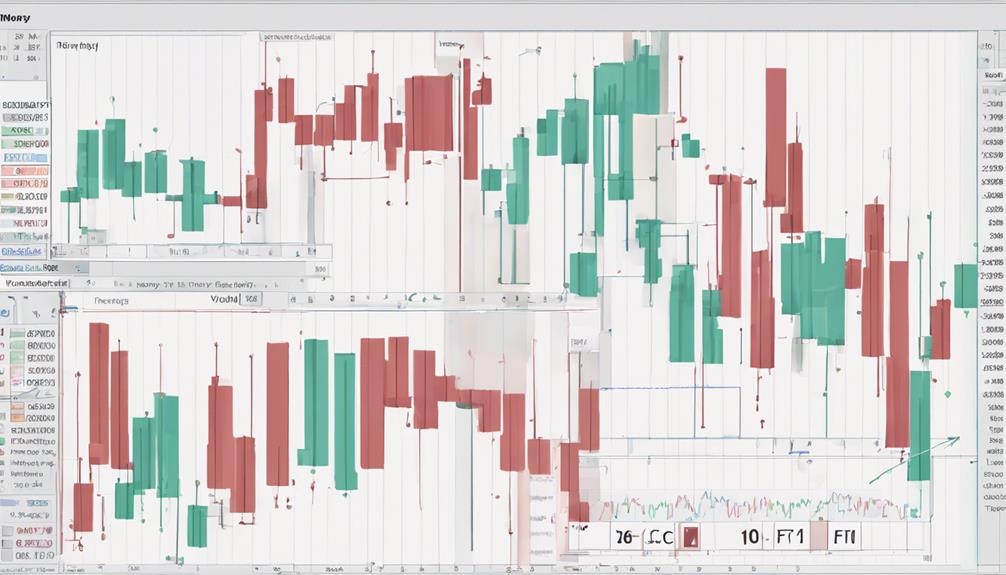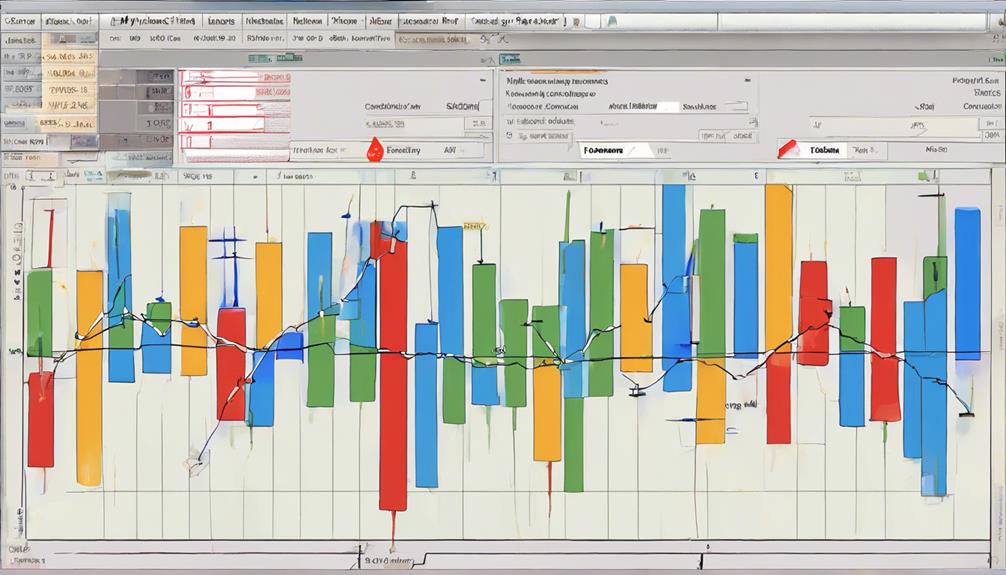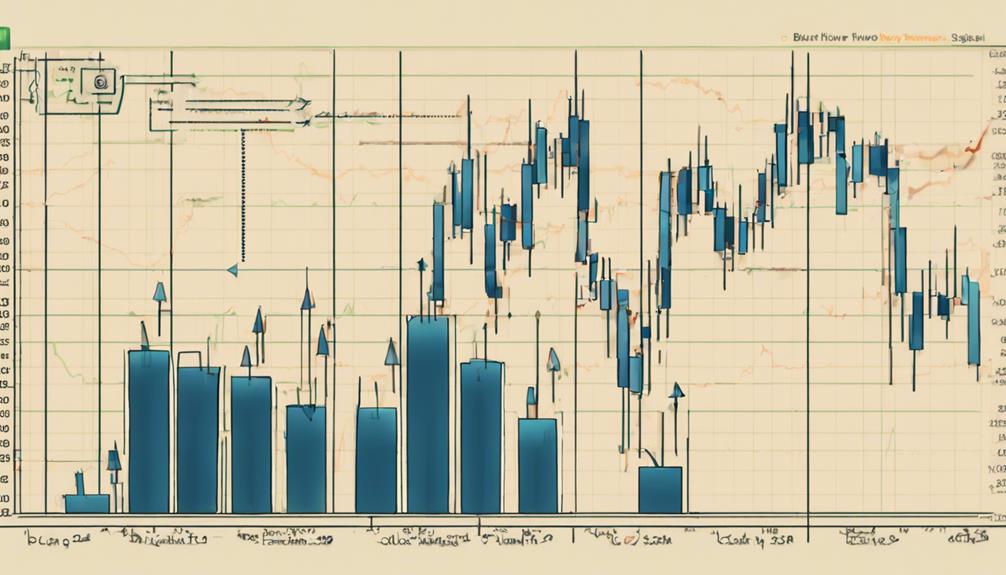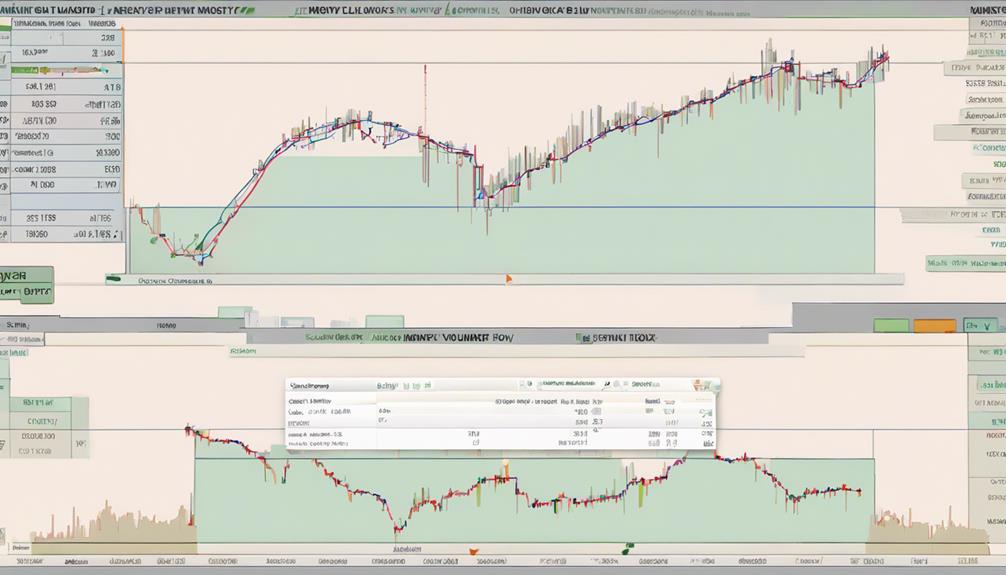Mastering the market with the best money flow indicator involves grasping the Money Flow Index intricacies, utilizing calculations for market insights, interpreting data for strategic decisions, implementing customized trading strategies, and comparing nuances for optimized outcomes. The Money Flow Indicator is essential for traders to gauge market sentiment and identify potential reversals. By understanding its calculations and interpretations, traders can make well-informed decisions to enhance their trading strategies. Utilizing this indicator in conjunction with other tools can further refine trade signals and improve entry and exit points. Exploring these aspects can elevate traders' understanding of market dynamics and enhance their trading success.
Understanding the Money Flow Indicator
When delving into the intricacies of the Money Flow Indicator, one must grasp its fundamental function as a volume-weighted oscillator that quantifies the interplay between buying and selling pressures in a market.
The Money Flow Indicator, also known as the Money Flow Index (MFI), combines both price and volume data to provide traders with a thorough view of market dynamics. By analyzing the MFI, traders can identify potential trend reversals by observing divergences between price movements and the indicator.
This tool, ranging from 0 to 100, offers valuable insights into market sentiment, helping traders make informed decisions on whether to enter long or short positions. The MFI is particularly useful for recognizing overbought conditions when the indicator surpasses 80 and oversold conditions when it falls below 20.
Its ability to incorporate both volume and price data sets it apart as a reliable indicator for evaluating market conditions and making strategic trading choices.
Calculating Money Flow Index

The calculation of the Money Flow Index (MFI) involves determining the typical price, which is the average of the high, low, and close prices. This is followed by computing the raw money flow based on volume traded. To calculate MFI, traders multiply the typical price by the volume traded to derive the raw money flow.
Subsequently, the money flow ratio is computed by dividing the positive money flow by the negative money flow over a specific period. The final MFI value is obtained using the formula 100 – (100 / (1 + money flow ratio)), with values ranging from 0 to 100.
Divergences between MFI values and price movements are essential as they can signal potential trend reversals or shifts in market sentiment. By understanding how to calculate MFI accurately, traders can leverage this indicator to make informed decisions and identify potential market opportunities based on money flow analysis.
Interpreting Money Flow Data

Continuing our analysis of Money Flow Data, interpreting the values generated by the Money Flow Index (MFI) provides essential insights into market sentiment and potential trend reversals. Understanding MFI is pivotal for making informed trading decisions and predicting market trends accurately. Here are three key aspects to keep in mind when interpreting Money Flow Data:
- Overbought and Oversold Conditions: MFI oscillates between 0 and 100, with readings above 80 signaling overbought conditions and below 20 indicating oversold conditions. Identifying these levels helps traders anticipate potential reversals in market trends.
- Divergences with Price Action: Divergences between the price action and MFI levels can highlight potential trend reversals or the strength of an ongoing trend. These divergences are crucial for confirming market movements and adjusting trading strategies accordingly.
- Market Sentiment Analysis: By calculating typical price, raw money flow, and money flow ratio, MFI provides an insightful view of market sentiment. This information is invaluable for conducting thorough technical analysis and improving risk management strategies in trading.
Implementing Money Flow Strategies

Implementing strategic Money Flow Index (MFI) techniques enhances trading precision and risk management effectiveness. By utilizing MFI, traders can identify potential trend reversals through divergences between MFI and price action. The MFI's ability to confirm trend strength provides valuable insights for making informed trading decisions.
Combining MFI with other indicators can further improve the accuracy of trade signals and enhance overall risk management strategies. Setting specific thresholds based on overbought and oversold conditions (above 80 and below 20, respectively) can help traders optimize their entry and exit points.
Additionally, adjusting MFI strategies to different timeframes enables traders to tailor their approach to various market conditions, ultimately increasing the effectiveness of the indicator in different scenarios. To sum up, integrating MFI into trading strategies can significantly enhance the ability to interpret market dynamics and make well-informed trading decisions.
Comparing Money Flow Indicators

When evaluating Money Flow Indicators, a comparative analysis reveals important insights into market dynamics and trading strategies.
- Money Flow Index (MFI) vs. Volume-Weighted Oscillator
- The MFI is a volume-weighted oscillator that indicates overbought conditions above 80 and oversold conditions below 20, while the Volume-Weighted Oscillator emphasizes volume-weighted price movements.
- Market Sentiment and Divergences
- MFI accurately assesses market sentiment by considering both price levels and trade volume, and it highlights divergences that can signal potential price reversals and shifts in market dynamics.
- Smart Money Movements and Technical Indicators
- By differentiating between institutional and retail traders, MFI helps traders understand smart money movements. Additionally, when combined with other technical indicators, MFI provides valuable insights for entry and exit signals, risk management, and trend confirmation.
Comparing these aspects of Money Flow Indicators can enhance traders' understanding of market conditions and improve their decision-making process.
Frequently Asked Questions
How to Use the Chaikin Money Flow Indicator?
Interpreting the Chaikin Money Flow Indicator involves analyzing the indicator's movements to identify market sentiment shifts. Practical applications include using it to confirm trends, spot divergences, and manage risks effectively.
Chart analysis of CMF involves correlating volume data to historical price movements, providing insights into market trends. Traders rely on the accuracy of the CMF indicator to make informed decisions and capitalize on divergence signals for profitable trading strategies.
Is Chaikin Money Flow Reliable?
Chaikin Money Flow (CMF) is a reliable tool for market analysis and trading strategies. Its effectiveness stems from analyzing money flow, investor sentiment, and volume to predict price movements and market trends.
By providing clear signals on accumulation or distribution phases in stocks, CMF assists traders in making informed decisions on trade entry and exit points.
When integrated with other technical indicators, CMF enhances the accuracy of trading signals and improves overall stock performance analysis.
Is MFI Better Than Rsi?
When comparing the Money Flow Index (MFI) and Relative Strength Index (RSI), the MFI offers a more thorough analysis by incorporating both price and volume data, providing more accurate signals. While RSI focuses solely on price movements, MFI's consideration of trading volume enhances its predictive capabilities for market reversals and divergences.
This makes MFI a preferred choice for traders seeking a more detailed understanding of market sentiment and potential trading opportunities.
What Is the Best MFI Indicator Setting?
When determining the best MFI indicator setting, traders should consider various factors such as:
- Market analysis
- Signal accuracy
- Trading strategies
- Trend identification
- Price movement
- Volume analysis
- Technical analysis
- Risk management
- Profit potential
Adjusting indicator parameters, like the period setting, impacts the sensitivity and reliability of the MFI signal. Experimenting with different settings allows traders to tailor the indicator to their specific objectives and preferences, optimizing its effectiveness in decision-making processes.
Conclusion
To sum up, mastering the market with the best money flow indicator requires a deep understanding of its calculations, interpretations, and strategies.
By comparing various money flow indicators, investors can make informed decisions to maximize profits and minimize risks.
Implementing these techniques with precision and diligence will ultimately lead to successful market navigation and financial growth.


